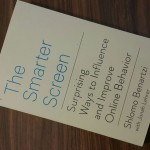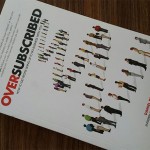 Changing something in the world. This is what most of us want to do or at least wish to do. This is the starting point of Seth Godin‘s book called Tribes.
Changing something in the world. This is what most of us want to do or at least wish to do. This is the starting point of Seth Godin‘s book called Tribes.
I have previously introduced him in my article about TV-Industrial Complex. Actually, TV-Industrial Complex is part of his bigger idea called: Tribes.
The ones who are familiar with McLuhan‘s concept of retribalization may think that Seth Godin is just repeating an old theory dressed as a new story. Well, its partially true.
According to McLuhan, the mechanical world had a culture of detribalization. Individuals had some space to breath and found tools helping them to detach themselves from the tribe.
McLuhan uses book and printing devices as symbol of this culture. Besides schools as old tribal learning systems, now everyone could learn individually by reading books.
But the new media moves the world toward something he called the global village. Where despite physical distance, we are all connected and we can talk about the book we have read last night.
I believe that Seth Godin has this idea vividly in his mind. As you see in his TED talk about tribes, he shows a Kindle, the new symbol of old paper books, and says:
What a shame it’s not organized to help authors to make movements!
Then he continues with the effect of building a network of readers who are reading the same book at the same time.
So you are right if you say his book is based on the old concept of retribalization. But it’s much more. Seth Godin provides us practical instructions for building our own tribes!
Whoever knows Seth Godin would not expect a well-organized operation manual, but an unstructured book with the flood of ideas repeated several times with different wordings in various stories. But that’s the inevitable characteristic of any new idea. The same holds true for McLuhan’s books as the prophet of digital re-tribalization.
Years ago, Factories were dominating people and grouped workers together to change the world. Afterward, in advertising and mass media age, money was the best way to push people through funnels you’ve made for them.
Nowadays, tribes are re-appearing. Seth Godin has a very simple yet applied definition of the tribe:
A tribe is any group of people, large or small, who are connected to one another, a leader, and an idea. For millions of years, humans have sought out tribes, be they religious, ethnic, economic, political, or even musical. It’s our nature.
The new digital age has provided us with a very cheap and easily accessible infrastructure to make a tribe. But being cheap and being accessible doesn’t mean that all of us can become a change agent. We need to learn to lead.
There’s a core belief behind Seth Godin’s tribe theory:
People don’t believe what you tell them.
They rarely believe what you show them.
They often believe what their friends tell them.
They always believe what they tell themselves.
So leaders give people stories. Stories they can tell themselves and the others.
I’ve written a separate article about the book, but at this stage, let me finish this short review with one of the book’s ideas I loved most:
Leadership is scarce because few people are willing to go through the discomfort required to lead. This scarcity makes leadership valuable





